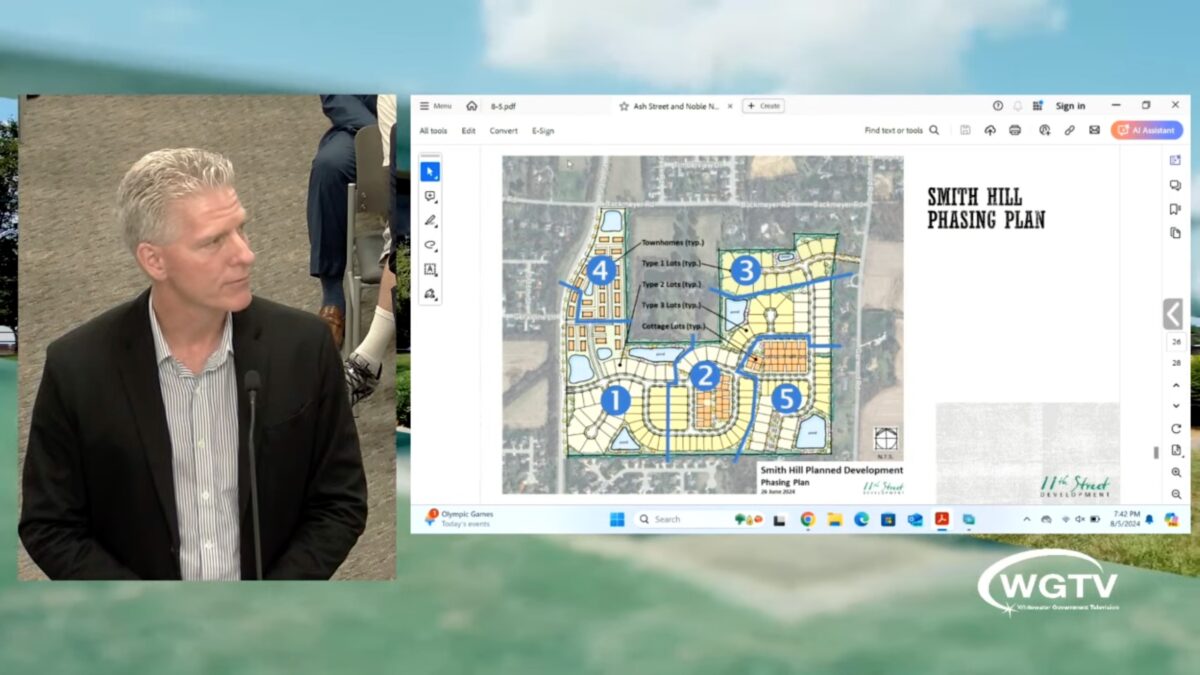In the case of the Smith Hill planned unit development, Richmond Common Council members ultimately decided that the city’s housing needs outweigh neighbors` concerns.
They voted 7-2 on Aug. 5 to approve zoning changes necessary for the development south of Backmeyer Road between South 37th Street and Garwood Road. About 90 people filled council chambers, and 30 spoke — 10 in opposition and 20 in favor.
Doug Goss, Bill Engle, Anne Taylor, Jane Bumbalough, Justin Burkhardt and Jerry Purcell voted in favor, with Lucinda Wright and Larry Parker opposing. Taylor, Bumbalough, Burkhardt and Purcell changed their votes from the April 15 meeting when council denied 6-3 zoning for the development’s original format.
An updated proposal from Indianapolis-based 11th Street Development now includes 178 single-family homes in four styles and up to 110 for-sale townhomes on 80 acres. The townhomes replace up to 220 apartments, and the possibility of a childcare facility was removed. The changes did not sway neighbors, but it did impact council votes.
Purcell said the developer’s compromise made the new request more reasonable for him.
“The apartments bothered me,” Purcell said. “The daycare didn’t bother me, but there was adjustment on the apartments.”
Bumbalough said that she heard from neighbors they did not want rental space or the commercial element.
“Those two things were addressed,” she said. “I feel very confident about this future development.”
Burkhardt said compromise and a public/private partnership are important.
“The neighbors were really opposed to the apartments and the daycare, and the developer addressed both of those issues,” Burkhardt said.
The development’s next step requires a traffic study and detailed plans about drainage and utility use. It will return to the Richmond Advisory Plan Commission for approval. The plan commission voted 7-1 to recommend council approve the zoning change.
Taylor concentrated on the zoning decision as a first step. Zoning approval begins the process of addressing neighbor concerns, and she said the development “benefits the future of the city and its residents.”
Goss and Engle said the community needs the development’s housing, a refrain repeated by development supporters. Goss said multiple approaches are necessary to address a housing shortage.
“If you are not changing, you are falling behind,” he said in a prepared statement. “Richmond has fallen behind.”
With zoning approval, the development can now be considered for Regional Economic Acceleration and Development Initiative (READI 2.0) dollars. Valerie Shaffer, president of the Economic Development Corporation of Wayne County, said that READI could cover 20% of the development’s infrastructure cost. Public money will be necessary, she said, but it won’t necessarily be tax increment finance dollars, as other loan options are possibilities.
While using TIF dollars would not bother Goss — “We use tax dollars for many economic development activities,” he said. “This is no different.” — Wright opposes spending TIF dollars on the development.
Parker, who represents District 4, says the 288 possible units are too many and will negatively impact the area’s infrastructure.
“We need housing,” he said, “but we don’t need it here.”
A version of this article appeared in the August 7 2024 print edition of the Western Wayne News.

